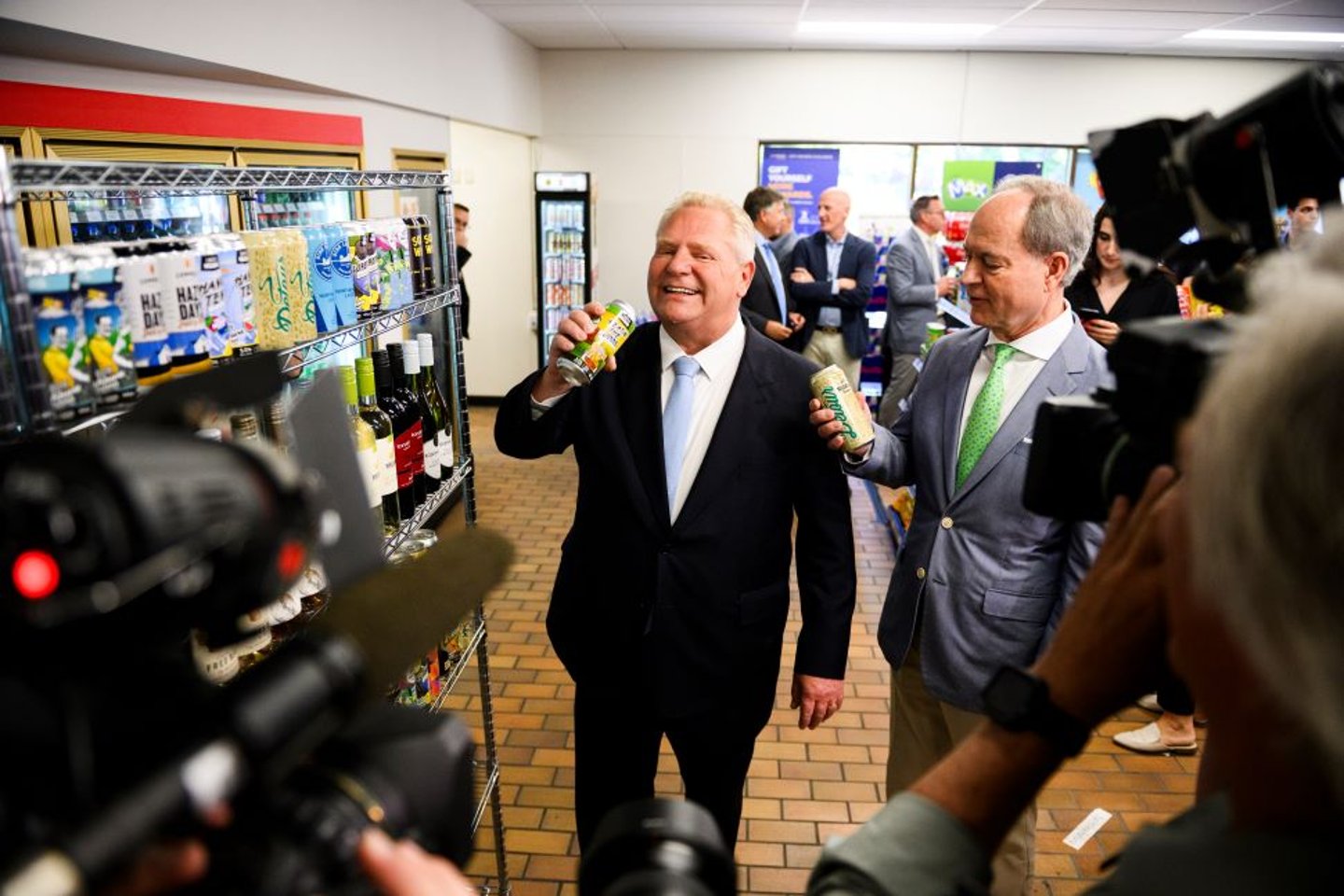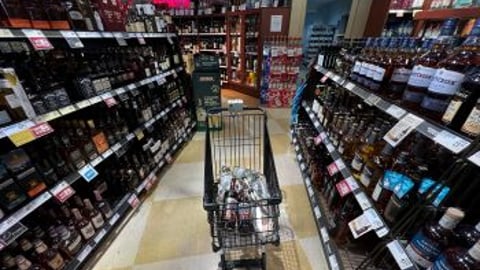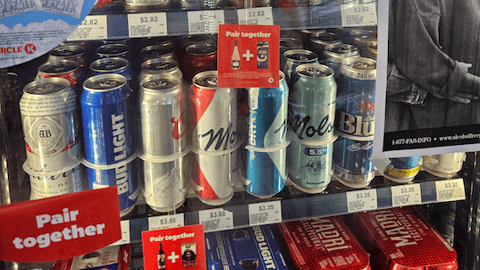Ontario provincial conservatives to spend hundreds of millions to boost alcohol sector
Ontario plans to spend hundreds of millions of dollars boosting the province's alcohol sector, including programs to support grape farmers, wineries, distilleries and craft breweries.
The province will spend $175 million over five years as part of a new program designed to boost the number of Ontario grapes in blended wine. The province said the program will eventually double the percentage of Ontario grapes, "leading to the purchase of thousands of additional tonnes of Ontario grapes from farmers."
The government is also making changes to help support the recently liberalized alcohol marketplace, with more than $250 million over the next two years to make it more competitive – and make booze more affordable. The changes include a tax rate cut for spirits at on-site distillery retail stores and a reduction in the microbrewer basic tax.
Last year the province liberalized rules on alcohol sales, allowing booze to be sold in convenience and grocery stores.
The alcohol modernization plan has gone "amazing," said Finance Minister Peter Bethlenfalvy.
The new supports are part of the budget tabled Thursday that will see a $14.6-billion deficit as the province spends money to counteract the trade war with U.S. President Donald Trump.
"This is a really big boost into world class spirits and alcohol here in Ontario and we're just levelling the playing field and reducing taxes and fees," Bethlenfalvy said.
More than 4,000 convenience stores were granted licences last September to sell beer, wine, cider and coolers, a figure that the province says has jumped to more than 5,000 such licences.
In late October, the province implemented the final phase of its liberalization policy when it allowed any grocer to sell booze. About 400 stores had signed up at the time and that number has since jumped to more than 1,000.
The Liquor Control Board of Ontario, the province's main alcohol seller and wholesaler, has seen revenues drop over the past few years from $2.45 billion in 2022-23 to projected revenues of $1.85 billion in 2025-26.
Officials point to the continued downward trend in alcohol consumption across the province as the primary driver for decreased revenues.
But the province is bullish on the Crown corporation, projecting annual revenues to reach more than $2.4 billion by 2027-28, "driven by its expanded role as a wholesaler in the modern marketplace."
"I think it's going extremely well," Bethlenfalvy said of the new alcohol regime. "We're hearing from convenience stores that this has been a game changer. The revenues are up, they're hiring more people, that's a win for consumers who are getting more choices."
The province also plans to change the look of cannabis stores by allowing businesses to take down their window coverings so long as pot products are kept out of view from the outside.
The changes are being done to help the province prepare for revenue streams within Canada that will soon open up.
Ford's government recently tabled legislation to get rid of all internal trade barriers and has signed memorandums of understanding with Nova Scotia, New Brunswick and Manitoba to allow direct-to-consumer alcohol sales. The premier wants to sign bilateral deals with every province and territory that will further expand the customer base for Ontario producers.
New Democrat Leader Marit Stiles said the province has its priorities wrong in the budget.
"There is more in here about alcohol sales and alcohol generally and there's not one mention of child care," she said. "There's more in here about those issues than almost anything else."
Key alcohol points from 2025 Ontario Budget - A Plan to Protect Ontario
Budget Items
- Streamlining and reducing the LCBO mark-up rates for spirit and wine-based ready-to-drink (RTD) beverages, to provide between 21% to 50% in rate cuts, as a first step in standardizing the mark-up treatment of this popular and fast-growing alcohol category by bringing the RTD rates closer in line with the current rates for beer and malt-based RTDs.
- Introducing a regulation framework under which the government would create a new “refreshment beverages” category to modernize and standardize the treatment of the RTD beverage alcohol category and to streamline the tax and mark-up rates for these products.
- Stopping a scheduled 4.4% increase to the cost-of-service fee applied to beer sold through the LCBO, to provide support to businesses and beer producers.
- Modernizing the mark-up treatment of cider with an approximately 47% cut to the LCBO basic mark-up rate to bring its rate closer in line with microbrewer basic mark-up rate to support craft cideries and apple growers.
- Introducing the Ontario Grape Support Program to help grape farmers and wineries by increasing the number of Ontario grapes in wine bottles. The program will provide up to $35 million in annual support to eligible wineries beginning in 2025–26 and until 2029–30, with total program funding of $175 million. This program is anticipated to double, on average, the percentage of Ontario grapes in blended wine.
- Extending and enhancing the VQA Wine Support Program to provide additional support to VQA wine producers, expanding total investment to $84 million in annual support, with total program funding of $420 million over the next five years.
- A 50% cut to the spirits basic tax rate at on-site distillery retail stores. This will support Ontario distillers and local economic development by bringing the tax rates at Ontario distillers’ on-site retail stores into closer alignment with similar on-site retail channels for other alcohol categories.
- Supporting the competitiveness of smaller brewers with a 50% reduction of the microbrewer basic tax and LCBO mark-up rates, while making targeted changes on the use of contract beer manufacturers, and technical amendments for increased flexibility and efficiency for microbrewers.





